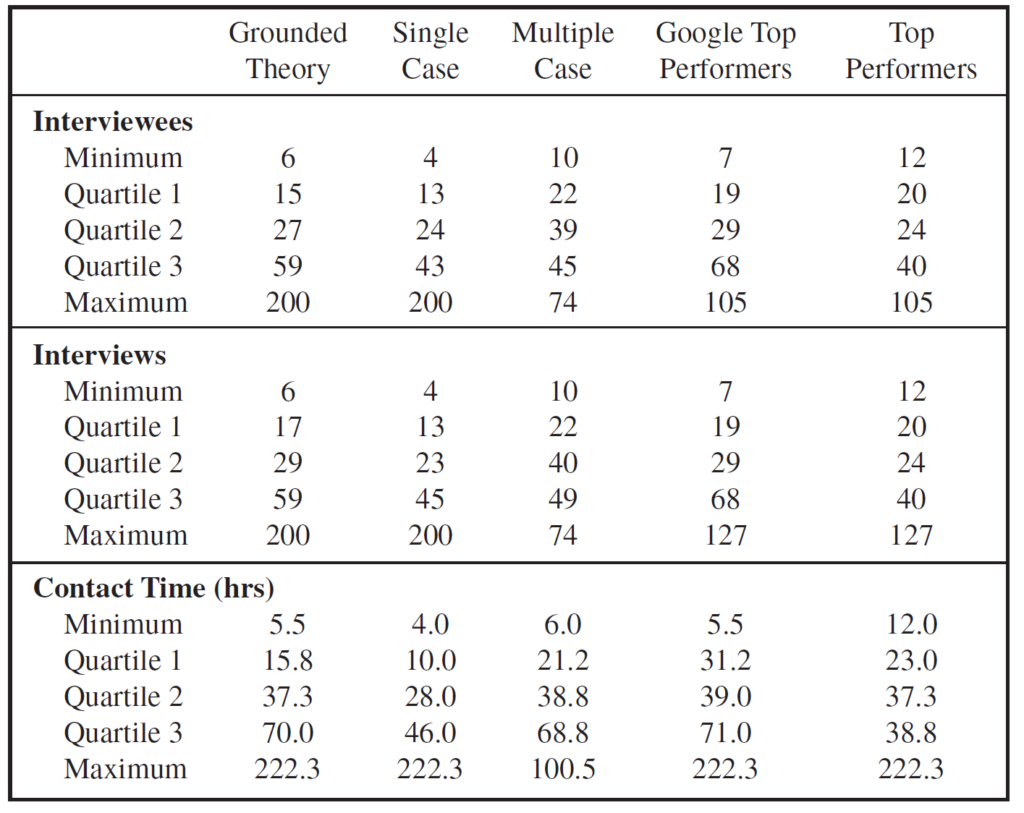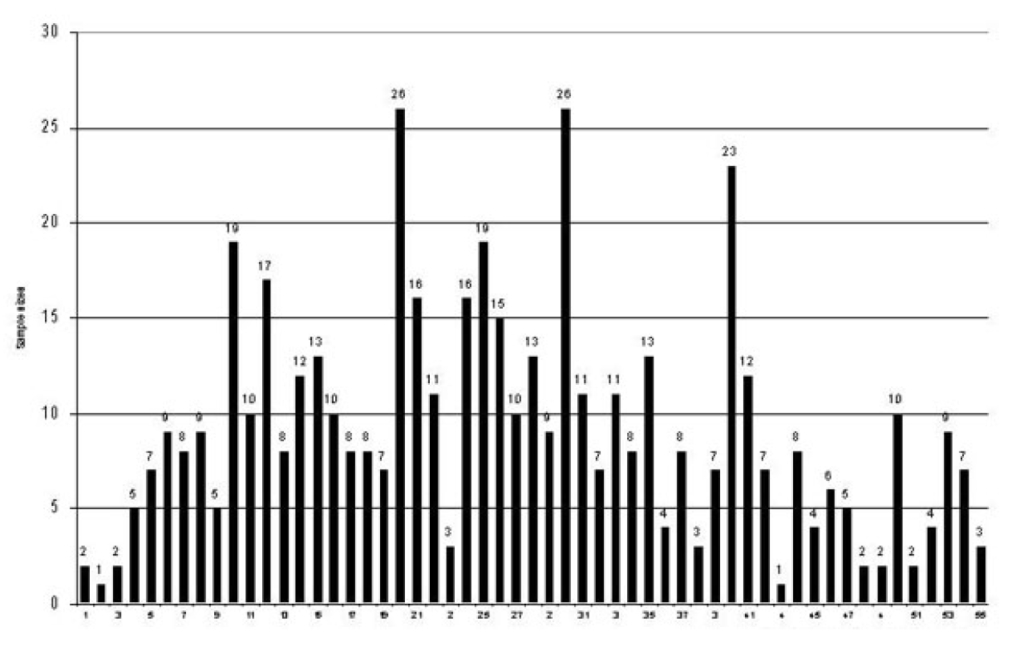How many qualitative interviews should you conduct for your market research? We have built an interactive tool (below) to answer this complex question. Select one of the 4 scenarios to automatically calculate the number of qualitative interviews you need to conduct.
How to determine the size of a qualitative sample?
The ideal size of a qualitative sample is a hotly debated issue. For this reason, it isn’t easy to get a clear answer. Most experts hide behind the saturation principle. This is based on the idea that the number of qualitative interviews is not known in advance. It is only when the new interviews do not reveal anything new compared to the previous ones that it is reasonable to stop the fieldwork phase.
While this approach may be acceptable in an academic context, it is not applicable in the business world. Indeed, a qualitative project in a business requires defining a precise perimeter beforehand and committing to the number of qualitative interviews to be conducted.
What does science say about qualitative sample sizes?
To design our calculator, we based ourselves on scientific results and academic articles.
Let’s start by reminding you that qualitative research does not seek statistical representativeness. Qualitative research aims to uncover a maximum of "themes" related to a subject. These themes will make it possible to formulate hypotheses that we can then verify with a quantitative phase.
Research that has focused on the number of qualitative interviews remains rare.
Dworkin (2012) points out that most authors suggest sample sizes of 5 to 50. This leaves a lot of room for error and does not, in advance, propose a reasonable estimate. He also reminds us that in qualitative research of the "grounded theory" type, having 25 to 30 participants is a minimum to reach saturation.
To anticipate the number of qualitative interviews necessary, Dworkin, therefore, proposes to look at the factors that influence saturation on the one hand and the constitution of the qualitative sample on the other:
- Is the study population homogeneous or heterogeneous?
- What are the criteria for selecting participants?
- What is the budget for the qualitative research?
- What is the time frame for the qualitative research?
- Are there any variables (key "stratifiers") that play a decisive role in understanding the topic?
- Is the researcher able to determine when saturation is reached?
Practical advice for determining your qualitative sample size
- Identify the segments of your market: they may respond to different dynamics that would require you to provide sufficient respondents for each of these groups.
- Identify key stratifiers through a literature review
- Ask yourself honestly about the difficulty of recruiting respondents and your ability to conduct and analyze the results.
- Analyze the results as you go along using a coding matrix to determine when saturation is reached.
Marshall et al. (2013) analyzed the number of interviews conducted in qualitative research on information systems (IT)
The authors distinguish several designs of qualitative research: "grounded theory," "single-use case," "multiple use cases." In market research, the "grounded theory" approach is hardly applicable because we are instead looking to validate a concrete application in a precise framework. Therefore, case studies ("use case") are more representative of what is being done in market research. The 2nd quartile (see table below) shows us the average values found by Marshall et al. (2012):
- 23 qualitative interviews for single case studies and 40 for multiple case studies
- 24 interviewees for single case studies and 39 for multiple case studies
- 28 hours of interviews for single case studies and 38.8 for multiple case studies

Morse (2000) proposes different variables that influence the number of qualitative interviews to be conducted:
- The scope of the research: is it a specific or broader problem?
- The subject matter: will the interviews be easy or difficult to conduct? Is the topic concrete or abstract?
- Will respondents have all the information?
- Data quality: what is the intellectual level of the respondents? Do the respondents know the subject matter? How much time is available for the interview, and how well can the respondents concentrate?
- Research design: Qualitative interviews applied to market research often fall into the "use case" category.

Mason (2010) studied 2533 doctoral dissertations using a qualitative approach and classified each qualitative sample according to the nature of the research. On average, the research was based on 31 qualitative interviews, with a median of 28. However, there were notable differences, with the "poorest" research having 1 interview. In contrast, one research study was based on 98 interviews.
The different types of qualitative approaches
The very nature of qualitative research helps determine sample size.
Ethnography and ethnoscience
For Morse (1994), 30 to 50 interviews are sufficient. Bernard (2000) notes that most research uses samples of 30 to 60 interviews.
Grounded Theory
Creswell (1998) recommends 20 to 30 qualitative interviews, while Morse (1994) recommends 30 to 50.
Phenomenology
For Creswell (1998), 5 to 25 interviews are ideal. Morse (1994) indicates that at least 6 interviews should be conducted.
Qualitative research in general
Bertaux (1981, p.35) suggests that the smallest acceptable qualitative sample size is 15 interviews.
Sources
Bernard, Harvey R. (2000). Social research methods. Thousand Oaks, CA: Sage.
Bertaux, D. (1981). From the life-history approach to the transformation of sociological practice. Biography and society: The life history approach in the social sciences, 29-45.
Creswell, John (1998). Qualitative inquiry and research design: Choosing among five traditions. Thousand Oaks, CA: Sage.
Dworkin, S. L. (2012). Sample size policy for qualitative studies using in-depth interviews.
Marshall, B., Cardon, P., Poddar, A., & Fontenot, R. (2013). Does sample size matter in qualitative research?: A review of qualitative interviews in IS research. Journal of computer information systems, 54(1), 11-22.
Mason, M. (2010, August). Sample size and saturation in PhD studies using qualitative interviews. In Forum qualitative Sozialforschung/Forum: qualitative social research (Vol. 11, No. 3).
Morse, J. M. (1994). Designing funded qualitative research.



